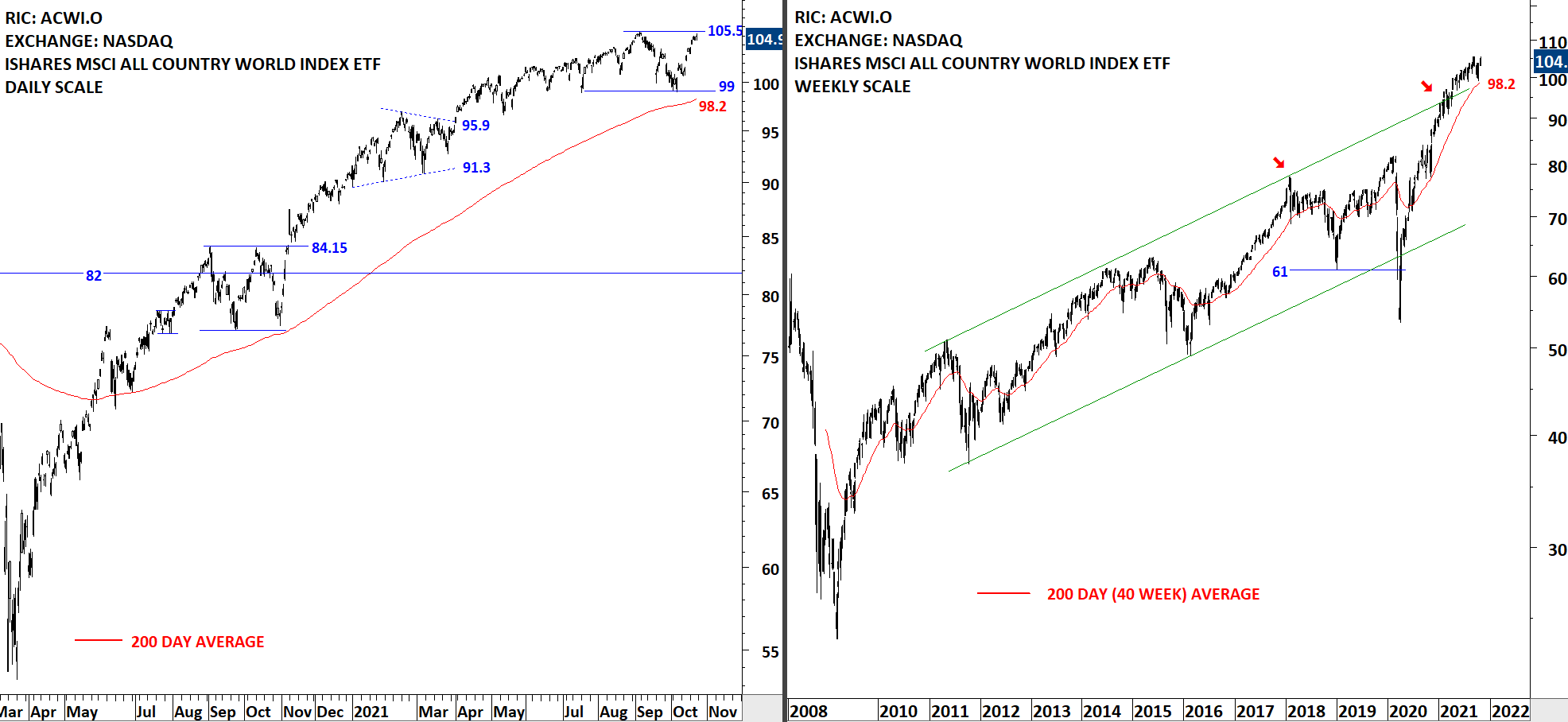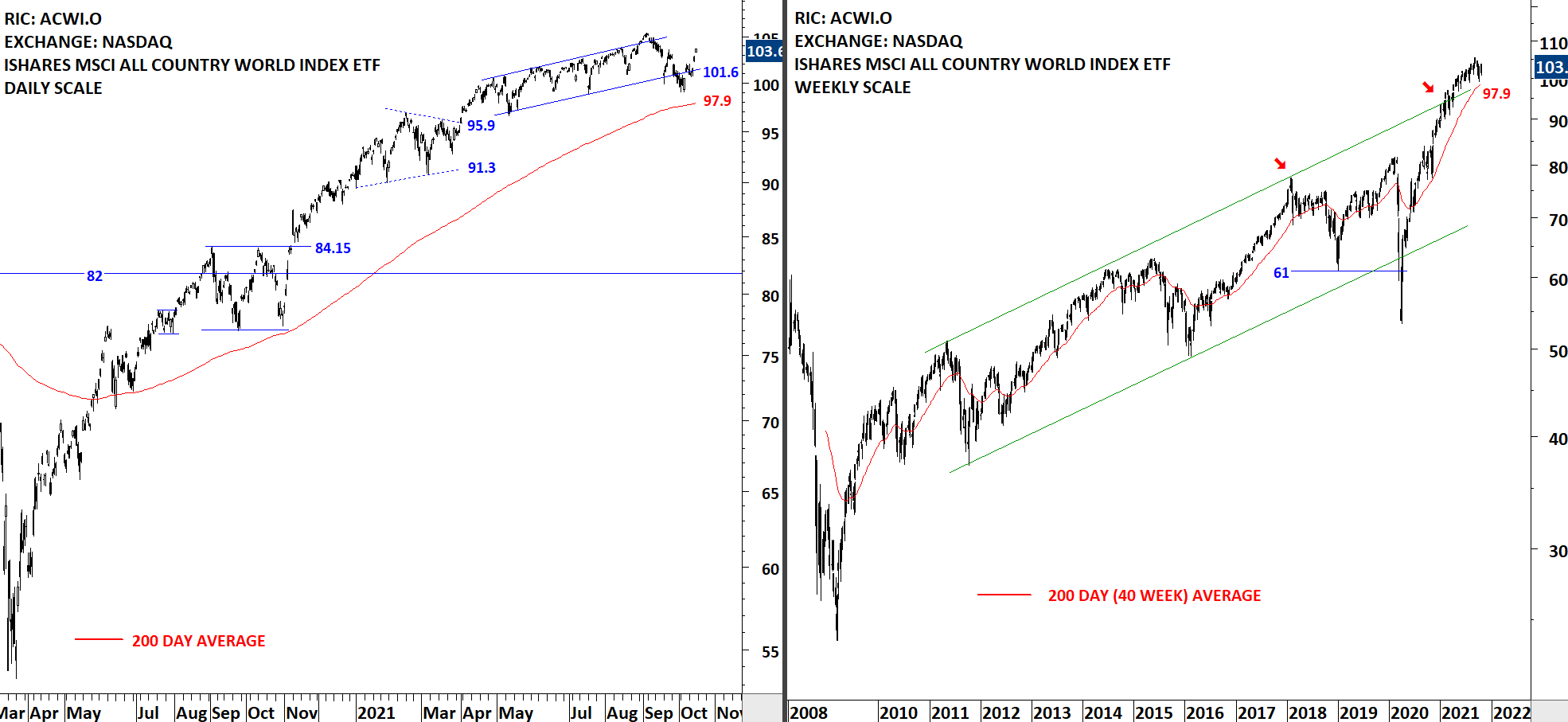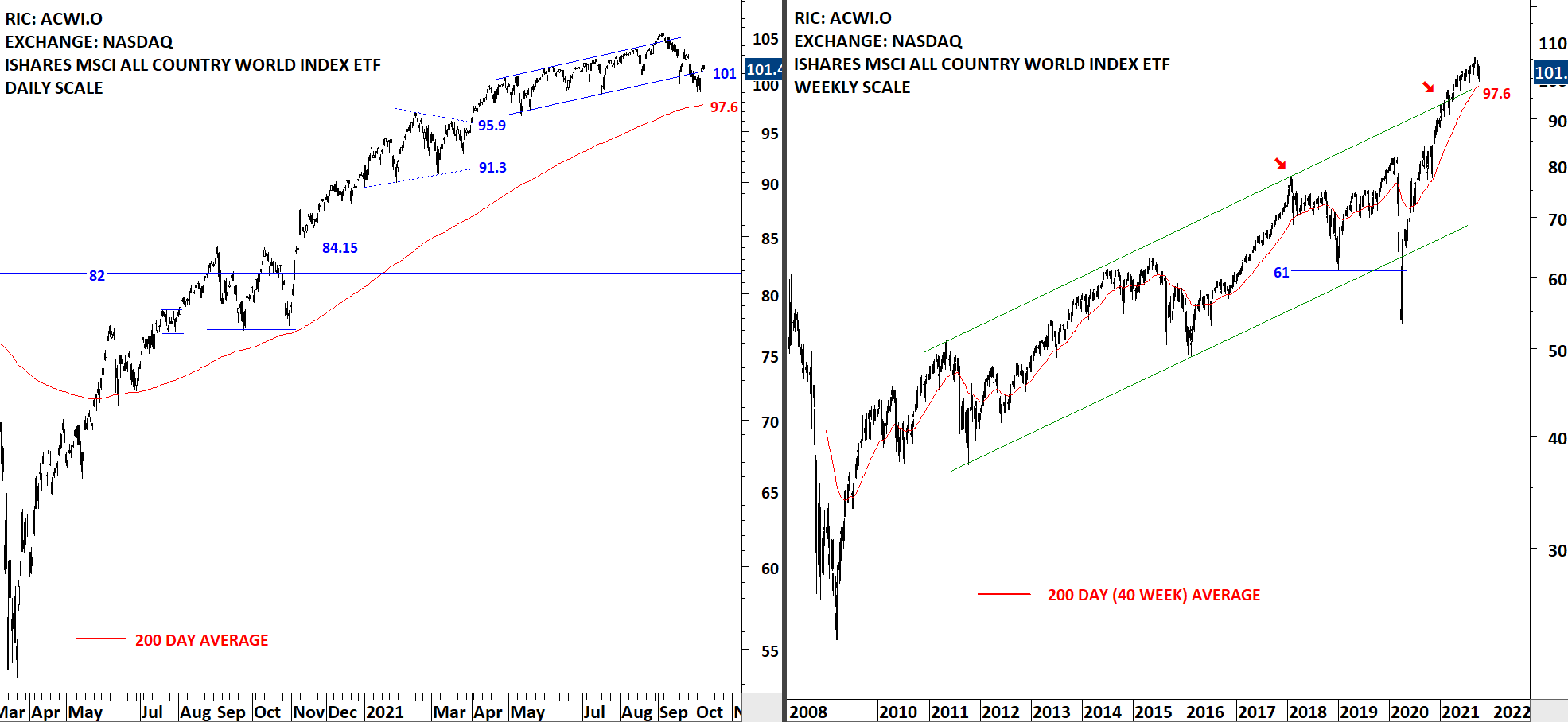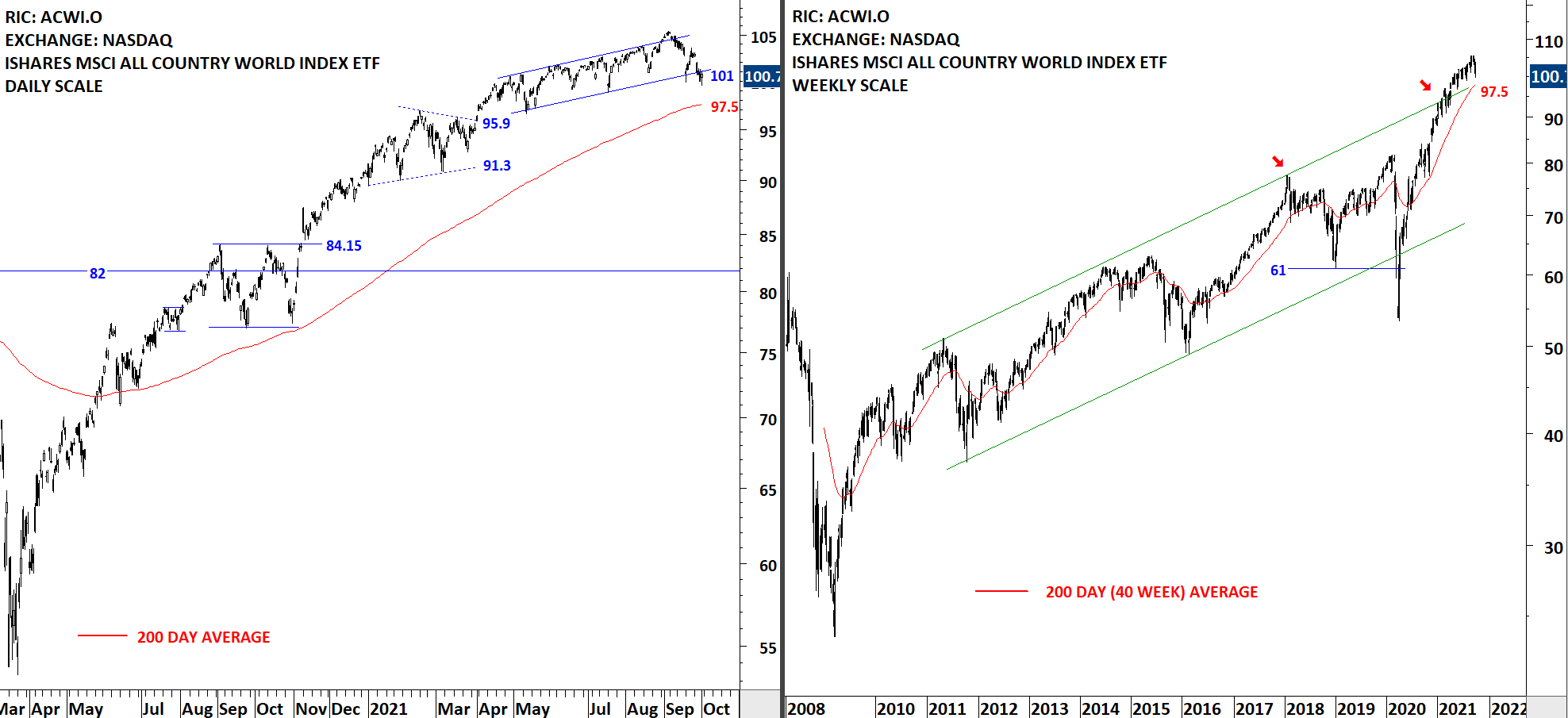CRYPTOCURRENCIES – October 25, 2021
All time highs acted as resistance, what is next for some of the major cryptocurrencies? Do we breakout to all-time highs and confirm or do we remain range bound for a little bit more? Read More
All time highs acted as resistance, what is next for some of the major cryptocurrencies? Do we breakout to all-time highs and confirm or do we remain range bound for a little bit more? Read More
The benchmark for the Global equity markets performance, the iShares MSCI All Country World Index ETF (ACWI.O) is in an uptrend. So far the price action seems like it completed a reversion back to the mean. Strong support area remains between 98.2 and 99 levels. There is no reversal chart pattern on the daily scale price chart. Previous high is acting as resistance at 105.5 levels. If the previous high acts as resistance I will expect a consolidation range between 99 and 105.5 levels.
 Read More
Read MoreI start my research on Mondays and finalize by end of day Thursday. Friday is dedicated to putting all ideas to the report format. During the week I come across good setups and those are featured in the weekly report. However, there are those that pop during the week and is worth bringing to your attention before the week finalizes. Below is the latest addition to Tech Charts watchlist from mainly ASIA & EUROPE equities. These charts will also be included in the weekly update.
Read MoreThe benchmark for the Global equity markets performance, the iShares MSCI All Country World Index ETF (ACWI.O) is in an uptrend. This price resumed uptrend after recovering back inside the trend channel. So far the price action seems like it completed a reversion back to the mean. Strong support area remains between 97.9 and 101.6 levels. There is no reversal chart pattern on the daily scale price chart.
 Read More
Read MoreRenewed strength for majority of the cryptocurrencies are helping prices reach all-time highs. In this report we are looking at Total Market Cap price chart, BTCUSD, ETHUSD and ETHBTC to understand the possible resistances ahead. Read More
The benchmark for the Global equity markets performance, the iShares MSCI All Country World Index ETF (ACWI.O) is in an uptrend. Failure to hold above the upper boundary resulted in a failed breakout and is now followed by a correction towards the lower boundary of the trend channel at 101 levels. This week the price recovered back inside the trend channel. So far the price action seems like a reversion back to the mean. Strong support area remains between 97.6 and 101 levels.
 Read More
Read MoreI start my research on Mondays and finalize by end of day Thursday. Friday is dedicated to putting all ideas to the report format. During the week I come across good setups and those are featured in the weekly report. However, there are those that pop during the week and is worth bringing to your attention before the week finalizes. Below is the latest addition to Tech Charts watchlist from AMERICAS equities. This charts will also be included in the weekly update.
Read MoreThe benchmark for the Global equity markets performance, the iShares MSCI All Country World Index ETF (ACWI.O) is in an uptrend. Failure to hold above the upper boundary resulted in a failed breakout and is now followed by a correction towards the lower boundary of the trend channel at 101 levels. The ETF after the rebound from the lower boundary of the channel, once again challenged the support. Unless we see a quick recovery back inside the channel, price can test the 200-day average at 97.5 levels. 97.5 is also the upper boundary of the long-term trend channel that can be seen on weekly scale price chart. For now the outlook is more like a reversion to the mean, rather than a major top reversal.
 Read More
Read MoreSeveral crypto currency pairs have completed short-term consolidations during July-September period. Most of them met their short-term price target. However following the rebounds, several pairs have run out of steam and charts have rolled over. In this update I'm taking a long-term look to many cryptocurrency charts to understand where we stand after the recent rebound and loss of momentum. All charts are on weekly scale and the moving average is the 52 week (year-long) average. Read More
The benchmark for the Global equity markets performance, the iShares MSCI All Country World Index ETF (ACWI.O) is in an uptrend. Failure to hold above the upper boundary resulted in a failed breakout and is now followed by a correction towards the lower boundary of the trend channel at 101 levels. The ETF tested the lower boundary of the trend channel and rebounded. The lower boundary is now a valid support given several tests. In case of a larger scale correction, strong support area will remain between 97.1 and 101 levels. 97.1 is also the upper boundary of the long-term trend channel that can be seen on weekly scale price chart.
 Read More
Read More
